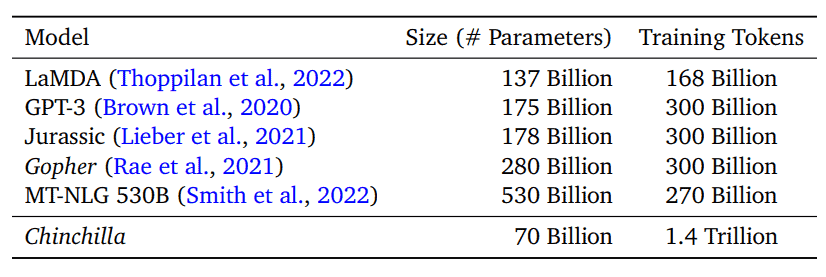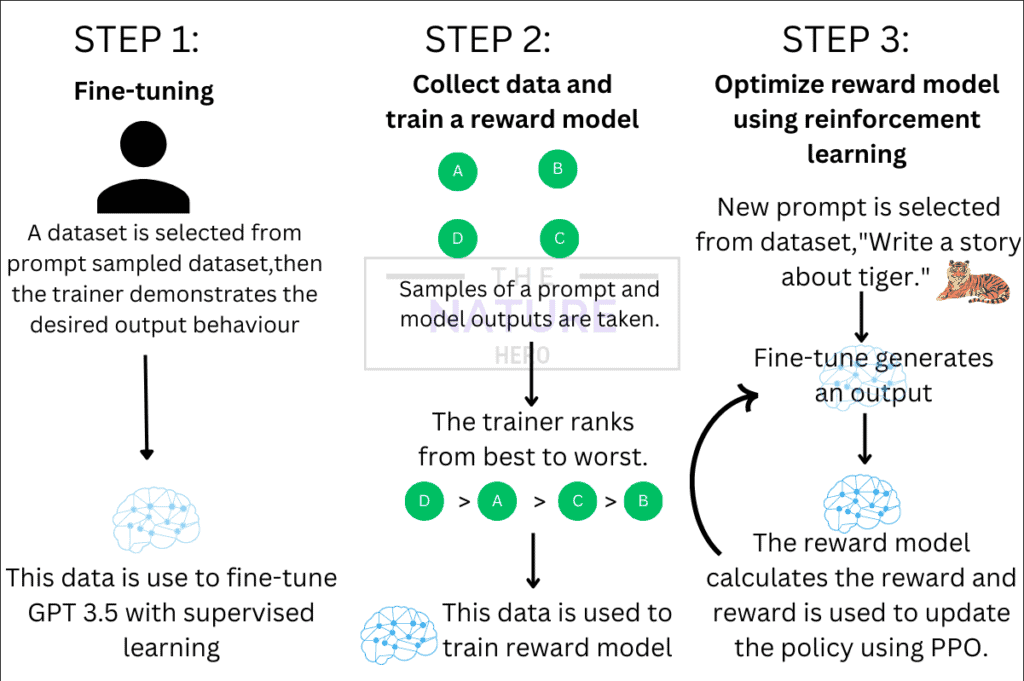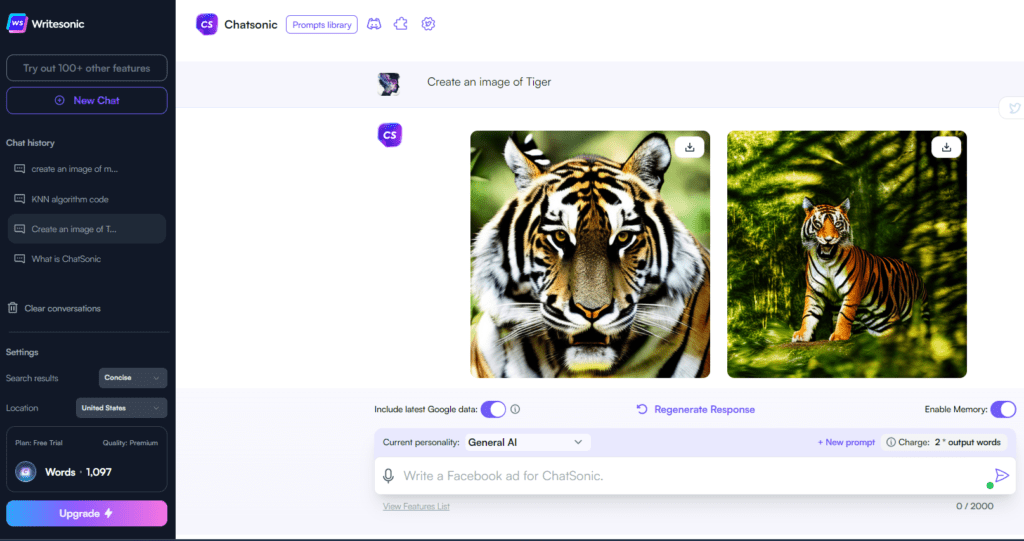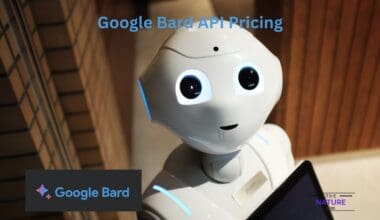Chinchilla AI is a model proposed by DeepMind used to develop various AI tools and perform natural language processing tasks.
Until now, it is publicly unavailable, so if you are going impatient and looking for another option, there are a few Chinchilla AI alternatives.
Continue reading to learn more about the features of Chinchilla AI and its best alternatives.
Table of Contents Show
What Is Chinchilla AI?
Chinchilla is an extensive language model developed by DeepMind, like the popular GPT model By OpenAI.
The model has 70 Billion parameters and 1.4 trillion training tokens, 4x more data than larger models.

Furthermore, it is breaking the trend of training language models with increasing model sizes without increasing the number of training tokens.
Moreover, Chinchilla outperforms larger models like Gopher, GPT-3 and Megatron-Turing NLG with a computing cost similar to the larger models.

Research from DeepMind suggests larger models are low performing due to the focus on scaling language models while keeping the training data constant.
Furthermore, research says, “or every doubling of model size, the number of training tokens should also be doubled.”
With this approach, DeepMind developed Chinchilla’s model, reaching an accuracy of 67.5% on the MMLU (Massive Multitask Language Understanding) benchmark.

What Are The Potential Uses Of Chinchilla AI?
Chinchilla AI is still in the testing phase and is unavailable to the general public.
Once released, it will be loaded with various AI tools, and we can use those tools to develop Chatbots, assistants and predictive models.
Furthermore, there are some potential uses of Chinchilla AI.
- The Chinchilla model can improve your digital products and business policy.
- You can use it to create Chatbots and virtual assistants.
- Chinchilla AI will be able to process large amounts of data that require a lot of data analysis.
- It can learn and adapt, making it an excellent choice for monotonous tasks.
- You can use it to create video game characters and build predictive models.
Therefore, with these capabilities, Chinchilla will surely stand out among other competitors in Artificial Intelligence.
What Makes The Chinchilla Model Different?
Deepmind research mentions that, unlike the trend of focusing on scaling language models while keeping training data constant, Chinchilla is developing using different approaches.
Further, some unique approaches distinguish Chinchilla AI from other language models.
1. Fixed Model Size
The model’s size is fixed in the first approach, and the number of training tokens varies (ranging from 70M to over 10B parameters).
With this approach, researchers can estimate the loss for a given number of training FLOPs (Floating Point Operations Per Second).
2. IsoFLOP Profiles
In the second approach, the model size varies with a fixed set of training FLOP counts ranging from 6 × 1018 to 3 × 1021 FLOPs.
3. Fitting A Parametric Loss Function
Now, learning from Approaches 1 & 2, researchers model all the losses as a parametric function of model parameter count and the number of seen tokens.
Drawbacks Of Chinchilla AI
Chinchilla AI is in the testing period, and many features are still updating, so users can experience some drawbacks.
- Sometimes, Chinchilla can generate offensive language and gender bias content.
- Chinchilla is capable of providing toxic language, hate speech and profanities.
- Chinchilla AI cost can be higher than expected.
- Till now, it is not available to the general public.
- The only optimization in Chinchilla is in terms of parameters.
Top 5 Chinchilla AI Alternatives To Use
No one knows when Chinchilla will be available, and even we depend on tweets of DeepMind to access its information.
Therefore, until its available, we can consider some best alternatives having similar or even better features than Chinchilla AI.
1. ChatGPT
ChatGPT is based on the GPT (Generative Pre-trained Transformer) model developed by OpenAI.
It operates on the fundamental model of GPT-3.5, NLP, and Reinforcement Learning from Human Feedback (RHLF).
However, it is still in the beta version and available only to ChatGPT Plus users.
Furthermore, ChatGPT operates on NLP and RHLF (Reinforcement Learning from Human Feedback).
The RHLF creates reward models, so we can fine-tune the model using Proximal Policy Optimization(PPO).
In the figure below, we can observe the process in simple steps.

Let us dive into their working model deeper.
Step 1: Fine-Tuning
A prompt is selected from the dataset, and the labeler demonstrates the desired output behavior.
This data is used to fine-tune GPT 3.5 with supervised learning.
Step 2: Data Collection And Training Reward Model
Prompt and several model outputs are sampled.
The labeler ranks the output from best to worst, which will use to train the reward model.
Step 3: Optimize Reward Model Using Reinforcement Learning
Labeler selects a new prompt from the dataset.
Fine-tune generates output; the reward model calculates a reward for the output. The reward is to update the fine-tuning using PPO.
Finally, let’s quickly look at the comparison between ChatGPT and Chinchilla.
| ChatGPT | Chinchilla |
|---|---|
| The main purpose of ChatGPT is to interact in a conversational way. | The main purpose of Chinchilla is to create chatbots and assistants using the model. |
| ChatGPT is used for writing codes, making calculations, translate information and more. | It will be use to create virtual assistants, predictive model,etc. |
| ChatGPT plus is available for $20/month. | Chinchilla's cost is not publicly available. |
| It is free to access to the general public. | We cannot access to Chinchillla currently. |
| It uses GPT-3.5 model having 175 billion parameters. | It is a model which has 70 billion parameters. |
2. Jurassic
Jurassic is a Large Language Model trained and made by AI21 studio.
The Jurassic Model has two series now, the Jurassic-1 series and Jurassic-2 series.

Furthermore, Jurassic-2 (J2) offers new features and capabilities, improving upon the previous series in every aspect.
The model is available in three sizes, J2-Jumbo, J2-Grande, and J2-Large.
Jurassic-2 Jumbo: Unmatched Quality
J2-Jumbo is the most potent and significant model in the series.
You can use it for complex language processing tasks, and we can fine-tune it in any custom application.
Jurassic-2 Grande: Optimal balance Of Quality, Speed, And Cost
J2-Grande is an ideal choice for text generation and language tasks that have more complexity.
Furthermore, it also has fine-tuning options that optimize quality, efficiency, and cost.
Jurassic-2 Large: Fast And Cost-Effective
J2-Large is a model for fast responses, which is an ideal choice for more straightforward tasks.
Furthermore, we can fine-tune it for tasks requiring minimum cost and less computing power.
Moreover, it supports several languages, including Spanish, French, German, Portuguese, Italian, and Dutch.
Finally, let’s quickly look at the comparison between Jurassic and Chinchilla.
| Jurassic | Chinchilla |
|---|---|
| It's main purpose is to compose human-like text and solving complex tasks such as answering questions and text classification. | The main purpose of Chinchilla is to create chatbots and assistants using the model. |
| It is mainly used to create text-based applications and content manipulation. | It will be use to create virtual assistants, predictive model,etc. |
| Jurassic costs $90 credits for 3 months. | Chinchilla's cost is not publicly available. |
| It is free to access to the general public. | We cannot access to Chinchillla currently. |
| The largest version of model consists of 178 billion parameters. | It is a model which has 70 billion parameters. |
3. ChatSonic
ChatSonic, developed by WriteSonic, can browse the internet and provide real-time content.
It is an advanced tool that can help you write unique quality content for various purposes, such as blog posts, essays, emails, and more.
Furthermore, it can also create realistic images and art forms with the help of technologies like Stable Diffusion and DALL-E.

Furthermore, like ChatGPT, ChatSonic also operates on the same fundamental model of GPT-3.5, NLP and RHLF.
Features Of ChatSonic
Besides image generation, Chatsonic offers unique and helpful features.
- It can create content for blogs, podcasts, videos, and social media.
- One of the incredible features of ChatSonic is generating real-time content like Forecasting Weather.
- You can provide inputs in ChatSonic through voice commands.
- Unlike ChatGPT, ChatSonic is available on mobile devices like Android and iOS.
- ChatSonic Twitter bot is a fantastic feature that can be a personal AI Chatbox for Twitter users.
Finally, let’s quickly look at the comparison between ChatSonic and Chinchilla.
| ChatSonic | Chinchilla |
|---|---|
| ChatSonic starting price is $13 with 60,000 words per month. | Chinchilla's cost is not publicly available. |
| It is available in every mobile devices, Windows, Mac and SaaS/Web. | We cannot access to Chinchillla currently. |
| It is designed to generate factual and real-time contents. | The main purpose of Chinchilla is to create chatbots and assistants using the model. |
| Chatsonic is built on GPT-3.5 having 175 billion parameters. | It is a model which has 70 billion parameters. |
4. LaMDA
LaMDA (Language Model for Dialogue Applications) is built on Transformer, a neural network developed by Google.
The model has 137 billion parameters and a dataset of 2.81 trillion tokens.
It is a conversational AI chatbot capable of translating languages, summarizing long documents, answering questions, etc.

Furthermore, LaMDA has powerful text-generation capabilities.
- It can generate sensible responses to the prompt, specific to the content and insightful.
- The model can avoid contents that can be harmful and biased.
- It also ensures that the contents are correct and supported by authoritative sources.
However, he was fired by Google for claiming that statement and violating some security rules.
Additionally, it’s worth mentioning that LaMDA is still in its alpha-testing phase, so features and capabilities will likely change.
Finally, let’s quickly look at the comparison between LaMDA and Chinchilla.
| LaMDA | Chinchilla |
|---|---|
| It has 137 billion parameters with training tokens of 168 billion. | Chinchilla has parameters of 70 billion and 1.4 trillion training tokens. |
| LaMDA is available to the general public. | We cannot access to Chinchillla currently. |
| It's main purpose is to translate languages, summarizing long documents and answering questions. | The main purpose of Chinchilla is to create chatbots and assistants using the model. |
5. Bloom
Bloom is the Largest Open Multilingual Language Model which Bloom AI develops.
It has 176 billion parameters that can generate text in 56 natural languages and 13 programming languages.

Furthermore, it is modified from the Megatron-LM GPT2 model and consists of software like DeepSpeed, PyTorch and Apex.
We can easily use the model using HuggingFace’s ecosystem and deploy using the following code.

Moreover, you can use Bloom for text generation, and to do specific tasks, you can further fine-tune the model.
The following are some uses for Bloom.
- You can use it to explore the characteristics of generated language by a language model.
- We can use Bloom for information extraction, summarization, and question-answering.
- You can use it in biomedical, political & legal, and finance domains.
However, people can also misuse it by generating spam content, disinformation, and other malicious activities.
Finally, let’s quickly look at the comparison between Bloom and Chinchilla.
| Bloom | Chinchilla |
|---|---|
| Bloom is mainly used to explore the characteristics of generated language by a language model. | The main purpose of Chinchilla is to create chatbots and assistants using the model. |
| Bloom is free to use for the general public. | Chinchilla's cost is not publicly available. |
| Bloom has 176 billion parameters that can generate text in 56 natural languages. | Chinchilla has parameters of 70 billion and 1.4 trillion training tokens. |
| Bloom is readily available to the general public. | We cannot access to Chinchillla currently. |
The Bottom Line
Chinchilla’s approach to developing a language model differs from any other model.
However, it is running in the testing phase, and we can find some great alternatives.
You can access the features and capabilities unavailable in Chinchilla’s model using alternatives.


